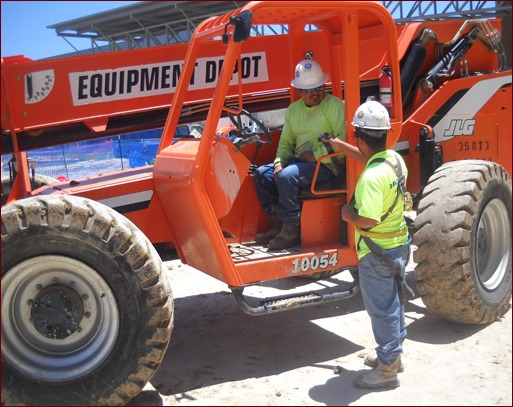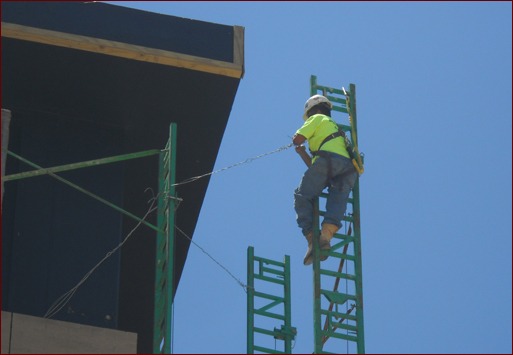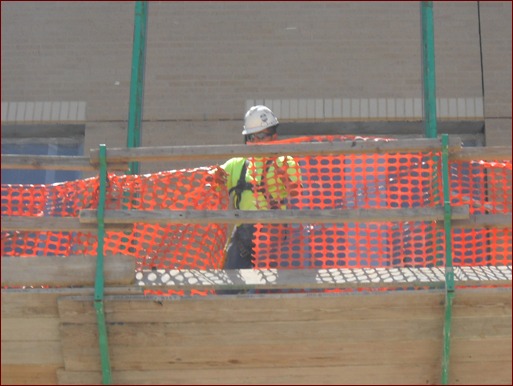Safety
Changing Employee Attitudes Toward Safety
We can apply lessons from Sir Winston Churchill to our business operations today.
Beginning in September 1939, Nazi Germany invaded and easily took Poland, France and Norway, and conquered or subdued much of continental Europe. There were Nazi-Soviet agreements, along with the Japanese making up the Axis power. Britain stood alone against an ominous enemy: Adolf Hitler and the seemingly unstoppable Nazi army. The United States joined the fight when Japan attacked Pearl Harbor on Dec. 7, 1941.
If the prime minister were another man, we may be speaking German today. He was Sir Winston Churchill. Perhaps his exemplary courage and speeches fostered the courage that actually won the World War II. When others may have stalled, quibbled and vacillated, or simply given in to the fear of Adolf Hitler, Churchill was resolved. One of his first acts after taking office was to create an additional position. He named himself as Minister of Defense.
In Churchill’s first speech as prime minister, he said, “I have nothing to offer but blood, toil, tears and sweat,” and later added “…we shall fight in France, we shall fight on the seas and oceans, we shall fight with growing confidence and growing strength in the air, we shall defend our island, whatever the cost may be, we shall fight on the beaches, we shall fight on the landing grounds, we shall fight in the fields and in the streets, we shall fight in the hills; we shall never surrender.”
His attitude was showcased when he said, “Let us, therefore, brace ourselves to our duties, and so bear ourselves, that if the British Empire and its Commonwealth last for a thousand years, men will still say, ‘This was their finest hour.’”
Allow me to draw a few parallels from this bit of history to the subject of shifting an employee’s attitude toward safety.
Leadership
A workforce never will develop a safe attitude unless and until it is supported and modeled from the top, down. Churchill was witnessed among the rubble and, himself, was a soldier and military leader before he became a national leader. Employees of a masonry company get a message from the top. What is that message? Is it production at any cost? Is it corner-cutting to make money? Are the owner(s) of the company unwittingly communicating to the employees that safety is second to production or saving money? In many cases, this is the case. The owners don’t mean to communicate that message, but it’s what the field hears, due to the volume of emphasis put on the respective subjects.
Even more influential is the supervisor in the field who is directly over the employees. The employees must answer to this person daily. Where is the volume of emphasis placed from day to day? Will he say more about the production needed or the safety that is needed? And, will he make allowances for “small” unsafe conditions, but not on production numbers? Consider what are the employees hearing, and the overwhelming body of information coming from the top. This message will determine how the employee’s attitude is formed.
Implementing change
Here are a few examples of actions that can reverse the tide. First, issue a mission statement that will be seen at the office and on the projects, and includes safety as a priority. This will communicate the goal from the top. Place banners at projects, with messages conveying the importance of safety. Release a newsletter to employees with a column on safety in each issue. Hold not only weekly safety meetings, but also a daily pre-task plan or Job Safety Analysis (JSA). Assure all employees understand the hazards of the task they will be performing each day. Whenever there is a near miss or injury, discuss it with the employees, and explain how it happened and how to prevent it in the future. Recognize employees for exceptional performance in safety.
The list could go on, but maybe the most important step is to listen to what the employees are communicating to you. If safety concerns are brought forth, but no action occurs, a clear message is being sent, unfortunately. If employees voice concerns that the scaffolding or forklift isn’t in good condition, but the same equipment is sent to job after job with no repair or replacement, they will feel safety is not a priority. Leadership in safety is needed from the top, down, for a workforce to ever form a safe attitude.
Learning
Changing an attitude also can be looked at as a changing of the mind. Educating an employee in an area will change how he views that particular subject. You see, before Churchill became prime minister, he happened to be one of the lone voices warning of the danger of this “Hitler guy” over there in Berlin. His admonitions went virtually unheeded. After the Nazi invasion of Poland, Britain realized what they should have been learning. The education of what could happen to them in the near future was obvious, so Churchill’s challenge was to teach them that it didn’t have to happen. In short, he taught his nation to “?Ķnever, never give up.”
We can help change the attitude of an employee who may be apathetic toward safety by teaching him why he should be safe. We must change his mind by showing the consequences of unsafe behavior, while training him on how the task can be accomplished without the hazards. We can do this with a New Hire Orientation, weekly safety meetings, pre-task planning or Job Safety Analysis, and special training in the areas of forklifts, scaffolding, etc?Ķ We also should personalize it by using real injury reports and near misses that they were involved in, and by referencing their families and how much they are needed at home, safe and unharmed.
An old adage related to teaching and learning reads, “Give a man a fish, and he has food for a day. Teach a man to fish, and he has food for a lifetime.” The reason this proverb has endured the ages is that it is so true. When we take the time to teach, it changes lives, families, companies and, sometimes, nations.
Discipline
Many more things could be brought forth, but one more thing should be mentioned here: discipline for unsafe behavior. Adolf Hitler had to deal with the consequences of his actions. If not for men like Winston Churchill, Hitler would not have had any immediate consequences. Similarly, if we have an employee willing to endanger his life and safety, and that of others, consequences that will change that behavior must be in place.
Every mason contractor needs a disciplinary policy, but that policy isn’t worth the paper it’s written on unless it is followed. An employee who makes a mistake can be retrained and made a valuable member of the team. An employee who purposely avoids and tries to get away with unsafe acts needs immediate consequences to his behavior, and it may be the termination of his employment. Some may find that harsh. But it may be the best action for the crew and the employee as it may save his life, and keep him from being maimed in an accident. It may be the one thing that changes his mind about safety, and his next employer won’t have to endure those dangers.
We all are on a journey toward safety and have room for growth in that area. We want to see better attitudes in safety. If we start with these basic nuts and bolts of cultivating a safe attitude in our people, we can say as Churchill did, “This is not the end. It is not even the beginning of the end. But it is, perhaps, the end of the beginning.”




